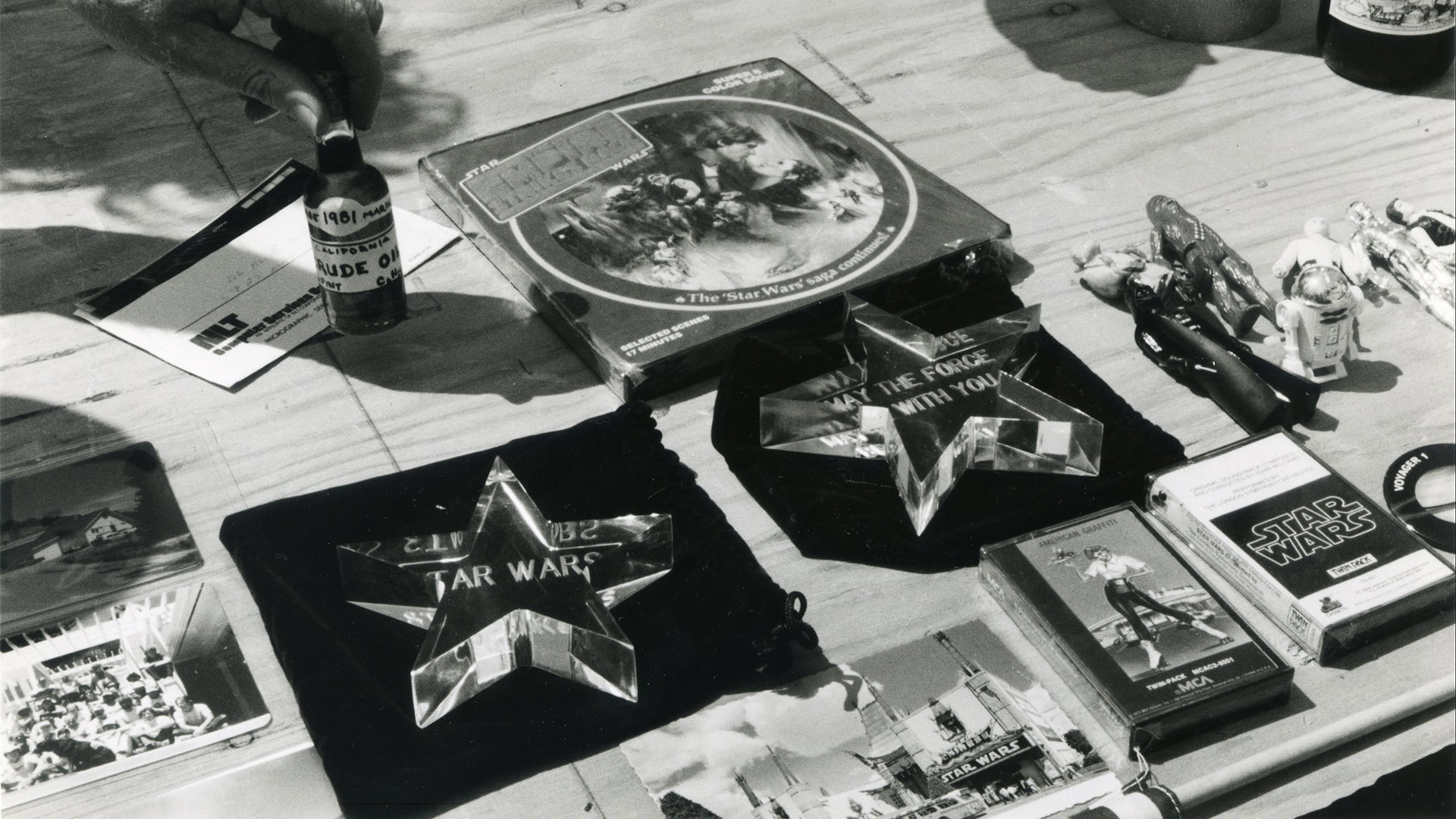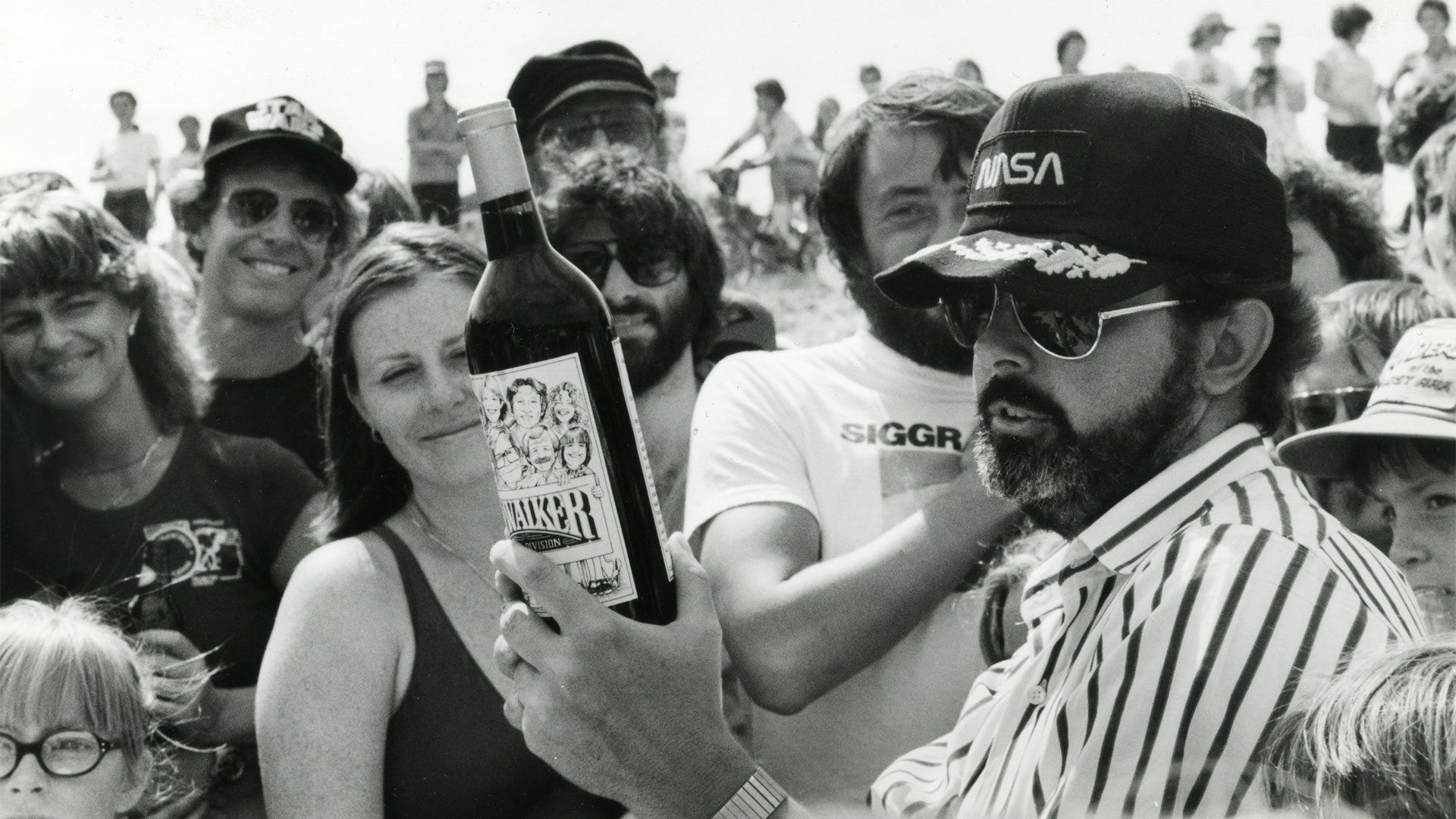HISTORY IN OBJECTS: LUCASFILM’S 1981 TIME CAPSULE
Discover the treasures Lucasfilm buried in a company time capsule in 1981
“History in Objects” is a continuing series exploring Lucasfilm’s legacy stretching from our founding in 1971 to today. Through objects both rare and commonplace, the company’s past, present, and future are brought to life.
Forty years ago this month, a special ceremony hosted during the annual July 4th Company Picnic in 1981 sought to commemorate the establishment of Skywalker Ranch itself, which would soon become the official home of Lucasfilm once new buildings finished construction. To officially herald in this new era for Lucasfilm, and to celebrate the company’s 10th anniversary that year, a time capsule was placed into the cornerstone of the Main House building containing several mementos and artifacts representing Lucasfilm’s cultural and merchandising legacy up to that point.
From photos and accounts of the day – since no comprehensive list has yet emerged – we have been able to compile a brief list of the time capsule’s contents, which measured 7.5 inches in diameter and three feet long:
- Lucite star paperweights inscribed with “Star Wars” and “May the Force be with You” in blue velvet bags – these were gifts to the cast and crew of Star Wars: A New Hope
- A bottle of wine with a custom label reading “Skywalker Design Division” that appears to depict caricature drawings of Lucasfilm employees. The back of the label indicated that this was a 1968 Cabernet Sauvignon, alluding to the year that Lucas and early collaborator Francis Ford Coppola happened upon the territory that would eventually become Skywalker Ranch
- Softcover editions of Ballantine Books’ The Art of Star Wars and The Art of The Empire Strikes Back
- A 17-minute super-8 movie reel of scenes from The Empire Strikes Back by licensee Ken Films
- At least six Kenner Star Wars action figures, including Darth Vader, Chewbacca, Luke Skywalker, C-3PO, Han Solo, and the lone entry from The Empire Strikes Back, Yoda
- A miniature wind-up walking R2-D2 toy produced by Japanese licensee Takara
- A miniature AT-AT walker snow globe or crystal ball, which may have been a licensing sample or gift item that was not widely produced
- A computer graphics t-shirt featuring an image of a staircase with a slash through it, meaning “no jagged edges” (the bane of early computer graphics artists)
- Raiders of the Lost Ark producer Frank Marshall’s crew cap
- Two Voyager I buttons commemorating the spacecraft’s flyby of Saturn on November 12, 1980 (Voyager II would repeat this feat in the month following the picnic in August, 1981)
- A postcard depicting Mann’s Chinese Theatre in Hollywood displaying the Star Wars title on the marquees
- The original Lucasfilm contract with Universal for 1973’s American Graffiti and “an unnamed science fiction movie”
- Cassette soundtracks for American Graffiti and Star Wars
- Six microfiche strips featuring the full roster of Official Star Wars Fan Club members in 1981
- A small American flag commemorating the Fourth of July ceremony
- A small sealed bottle with the label “California Crude Oil – Made [in] Marin 1981” (this one’s a mystery!)
- Photos of what appear to be Ranch construction employees and an early building on the Ranch
- “…and much, much more” according to an account published in the fan club newsletter at the time
While many of the items wonderfully captured the company culture and historical milestones of the era, the Lucasfilm merchandise items – with the exception of the American Graffiti soundtrack cassette – all happened to be produced by the very earliest licensees to sign on to Star Wars. Ballantine Books, which published the first Star Wars novel in late 1976, would go on to print scores of Star Wars titles in the years to come, including the two “Art of” books included in the time capsule; Ken Films had successfully marketed and sold countless super-8 shorts of Star Wars before the arrival of home video, and subsequently picked up the license for The Empire Strikes Back; 20th Century Fox Records, who manufactured the Star Wars soundtrack cassette, also offered the top-selling album on vinyl, 8-track, and reel-to-reel in 1977; Takara, who produced the wind-up R2-D2, was the primary Star Wars toy licensee in Japan, with the little Artoo wind-up now among the most sought-after early Star Wars toys; and Kenner of course remains the most famous of the early Star Wars licensees, whose current parent company – Hasbro – continues to produce Star Wars toys today.
“I hope this time capsule lasts a thousand years,” Lucas would say at the ceremony. If it does, it will certainly inspire amusement, wonder, and curiosity — standard ingredients for a good Lucasfilm story.


Pete Vilmur is a writer for Lucasfilm Publicity and co-author of The Star Wars Poster Book,The Star Wars Vault, and The Complete Vader.

